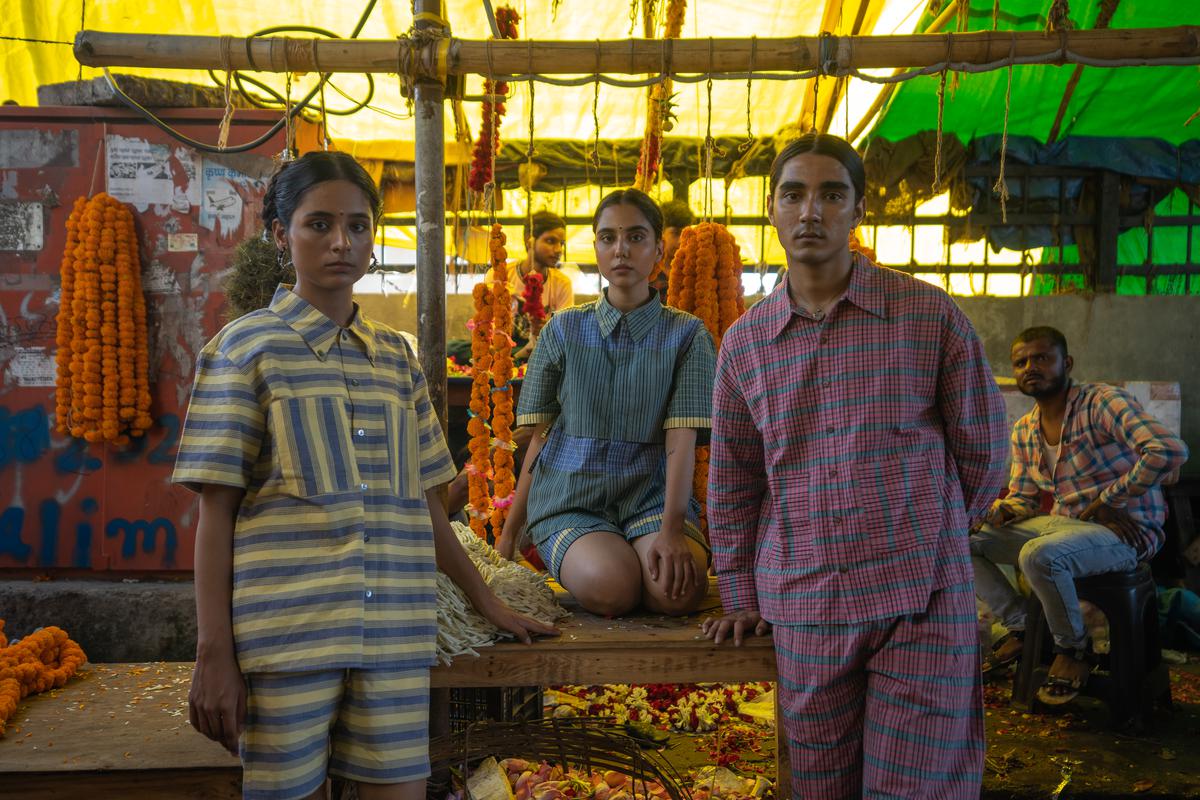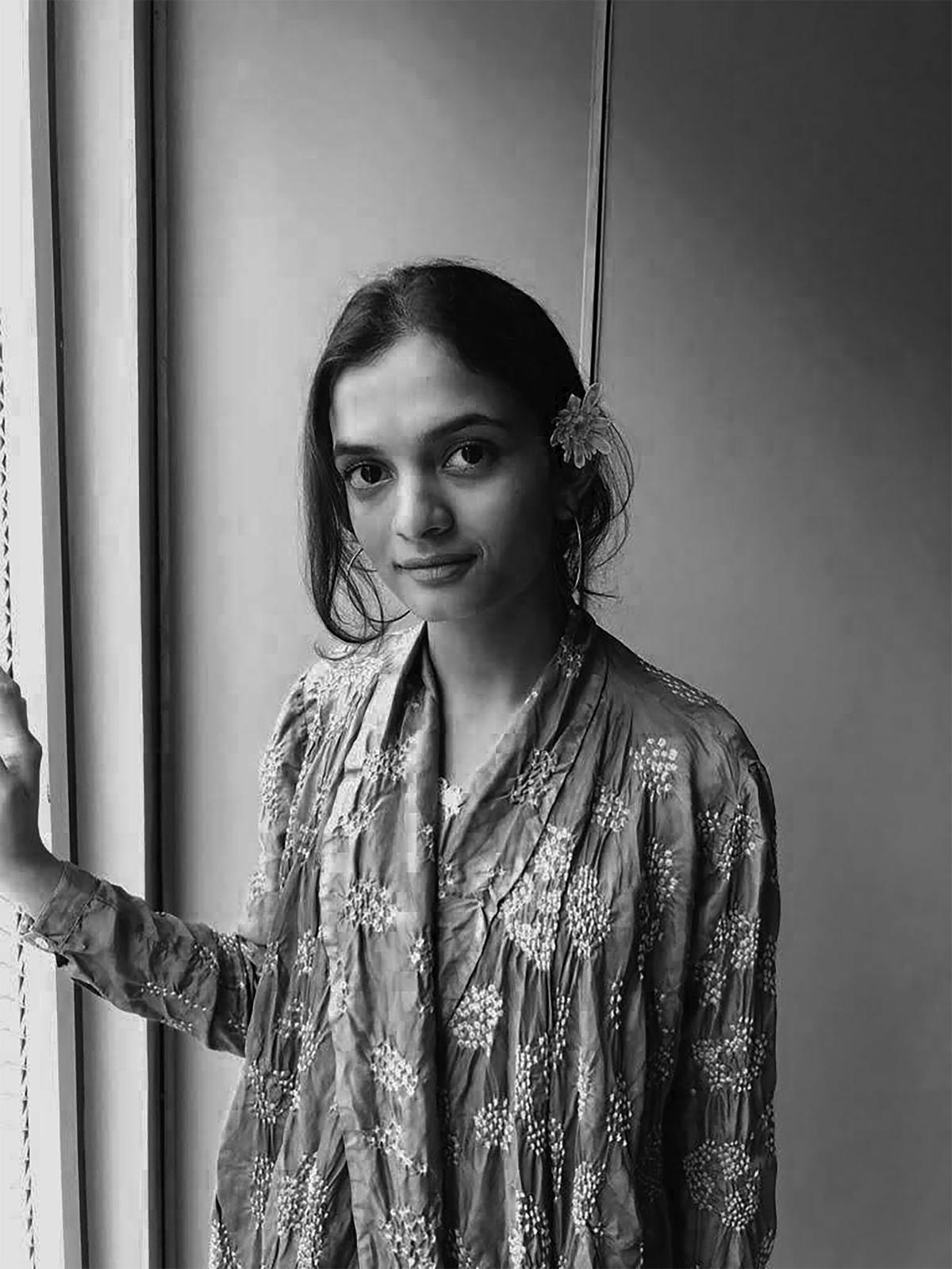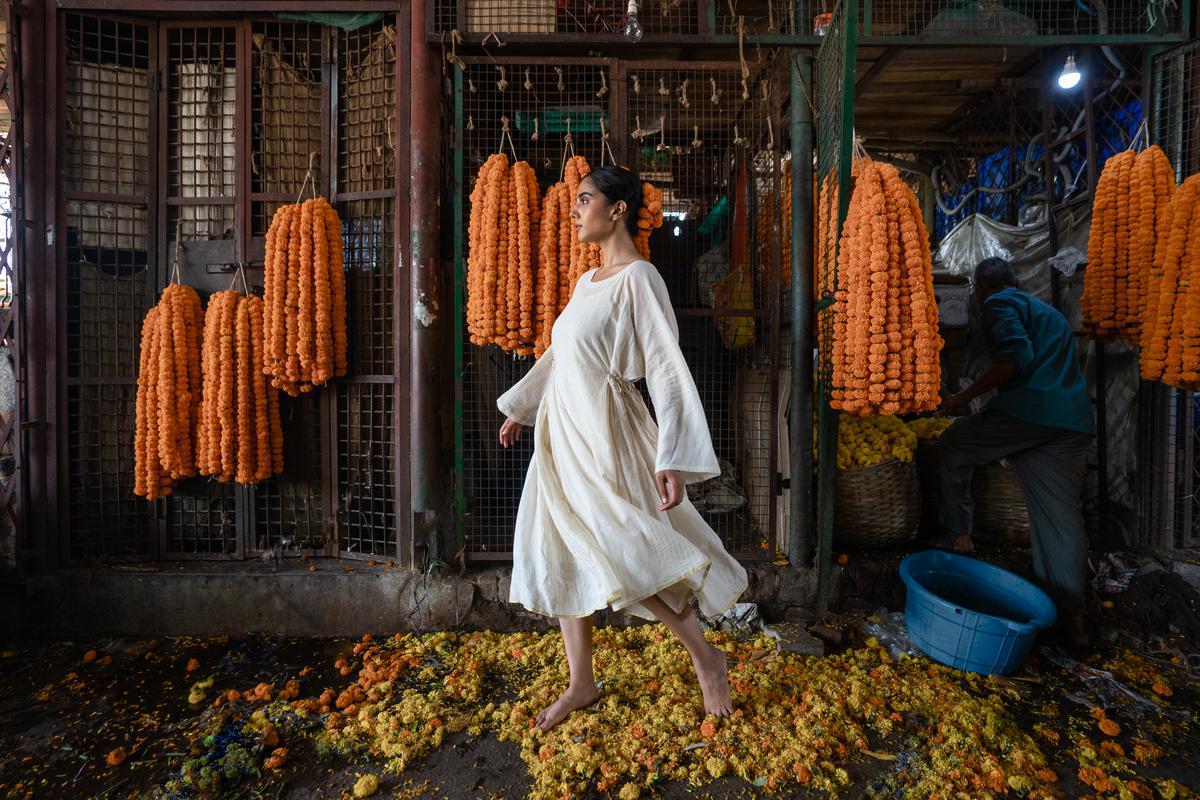With Yūga, designer Parul Gupta is designing gender-neutral apparel with Chendamangalam weaves

A snapshot from Kiru Keshiki
| Photo Credit: Special Arrangement
A couple of years ago, the Chendamangalam Handloom Weavers’ Cooperative Societies in Kerala’s Ernakulam district were grappling with yarn and dye shortages, and poor sales. This was after weavers lost their livelihood to the 2018 floods. Over the years, designers such as Sreejith Jeevan, and Shalini James, among others, have stepped in to revive the handloom village’s textiles and the famed kasavu. Now 24-year-old Parul Gupta aims to do just that with Yūga, a brand she launched in July 2022 that puts the H-47 Weavers Cooperative Society in the spotlight. After H-47, the brand’s first collection with 33 pieces that launched last September, Parul dropped her second range, Kiru Keshiki, last weekend.
Now designing gender-neutral shirts, trousers, dresses, skirts, and shirt dresses, the fashion design graduate from the Indian Institute of Art and Design (IIAD) in New Delhi says she worked with designer Himanshu Shani of 11.11 after her graduation and gained in-depth knowledge about Indian artisanship. “Following that experience, I decided to work on my own and kickstarted Yūga after discussions with fellow design graduate Gadha Gopal from Kerala, who had also researched the H-47 cluster in Chendamangalam,” says Parul.

A snapshot from H-47
| Photo Credit:
Special Arrangement
For H-47, we converted Kerala’s drape-based textiles ( mundu, set mundu, saris) into a variety of finely tailored designer garments, explains Parul. “We worked with the weavers to keep the product contemporary while maintaining its traditional value. We studied the fabrics and understood their strengths and worked with some of the staple designs and ensured minimum intervention with our designs,” says the designer, adding how the second collection is inspired by Kerala’s vibrant landscapes.
With Kiru Keshiki, which means ‘to wear landscapes’ in Japanese, we can see a more vibrant colour palette. Comprising relaxed-fit shirts, bottoms, and shackets (a crossover between a shirt and a jacket), Parul says, “We contrasted blue-greens of the water bodies with the yellow-pink tones of the sky. We have created a play on woven stripes, and derived the colours from fields, and stunning sunsets.” Elaborating on the shackets, she adds, “We have designed a basic shacket with a noticeable pleated sleeve and unique pockets, and another by the Japanese hanten (a short winter coat).” While the first drop featured the artisan cluster’s trademark stripes and checks, Kiru Keshiki has only two pieces with the traditional border, sans the stripes and checks.

Parul Gupta
| Photo Credit:
Special Arrangement
Having spent a few months with the weavers in Chendamangalam to put these collections together, Parul says she aimed at creating something beyond “designer wear”, and “expanding the possibilities of traditional textiles by exploring modern design silhouettes”. She explains how she experimented with colourful checks and stripes along with the age-old practices of kasavu weaving. “The H-47 collection is a modern take on Kerala’s textiles. The colour story of the collection — shades of blue, green, orange, yellow, and red, balanced with whites with vibrant borders — is propelled by the visuals of Kerala, drawing from the primary and secondary tones of the urban and rural spaces within Chendamangalam.”
Parul says she realised the need for close engagement with artisans to understand their challenges and to provide the best possible design interventions. “In India, the slow fashion industry is considered to be, and is, expensive for a majority of the public because there is a lack of clarity regarding the processes which go behind the product. The hand-done processes, involvement of natural materials, paying fair wages to the artisans, and safe working environment are the core values of the community of slow fashion,” she says, explaining why the brand involves storytelling to engage the customer. “By sharing the origin story of the cloth, the people, and place behind it in the clothing tags and wash care labels we provide the customer with a complete buying experience.”

A snapshot from H-47
| Photo Credit:
Special Arrangement
Due to their unique placement, these clusters practice varied self-sufficient methods of making yarn, says Parul. “The weavers use natural materials, such as coconut oil and starch (made from flour and rice water) for street sizing. This helps the artisan pass yarns easily in the loom, which further increases the lifespan and quality of the fabric. When discarded, they disintegrate easily and do not harm the soil,” she says.
Upwards of ₹ 2,200. @_yugaclothing on Instagram and Gallery OED, Bazar Rd, Mattancherry.
For all the latest Life Style News Click Here
For the latest news and updates, follow us on Google News.
